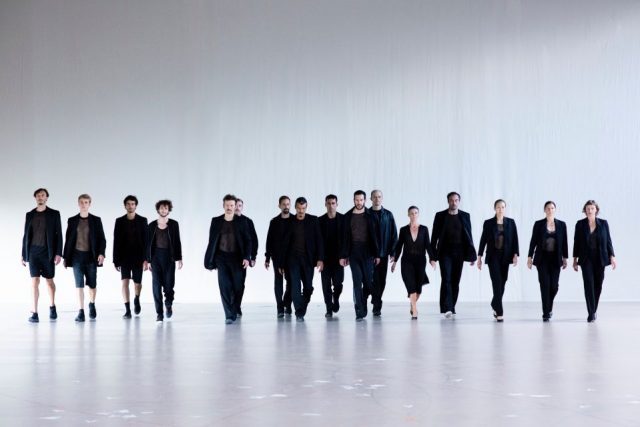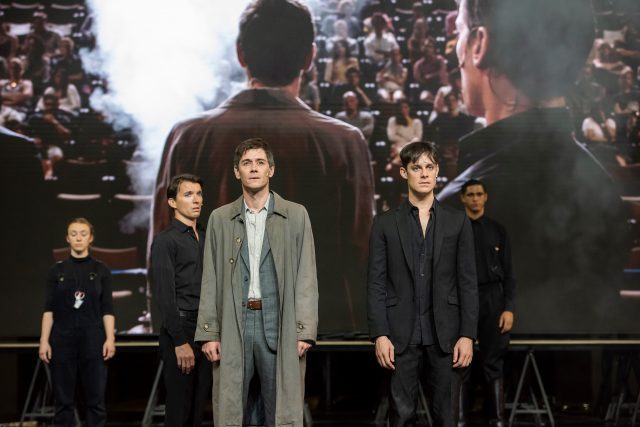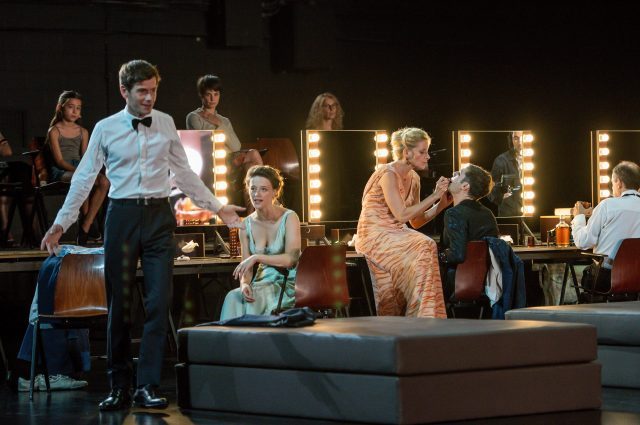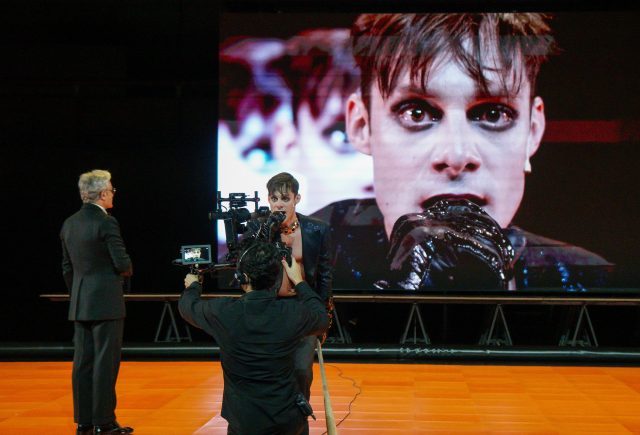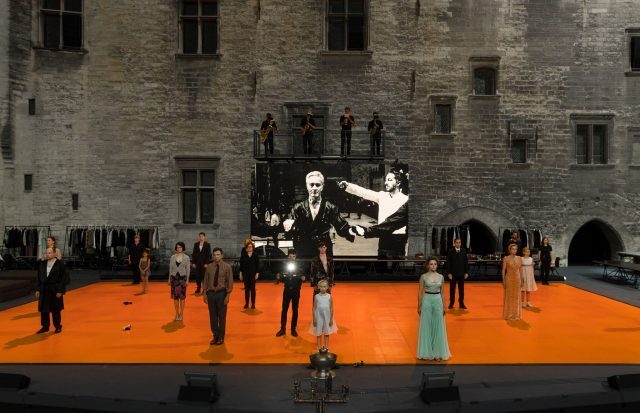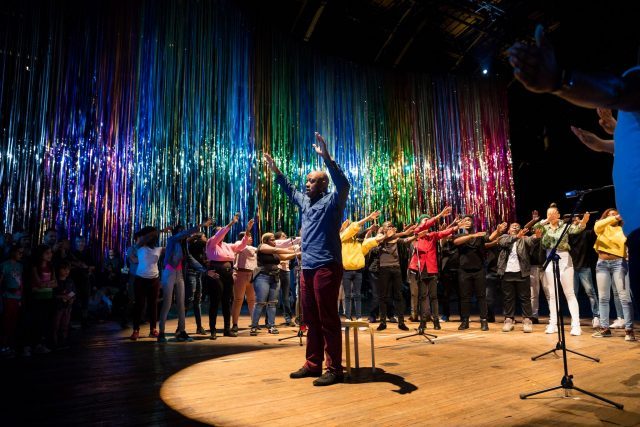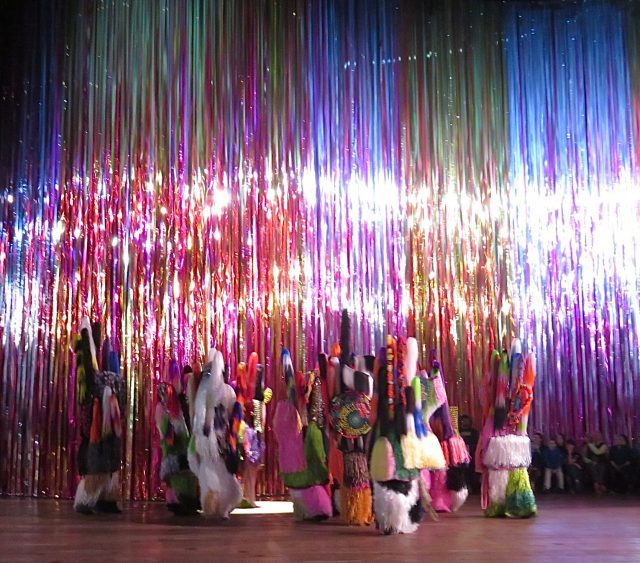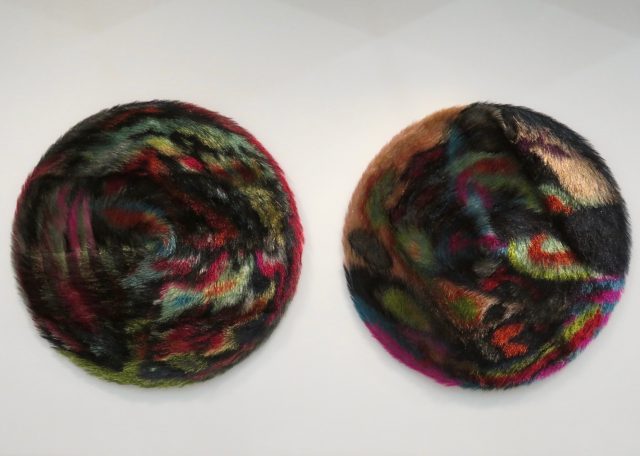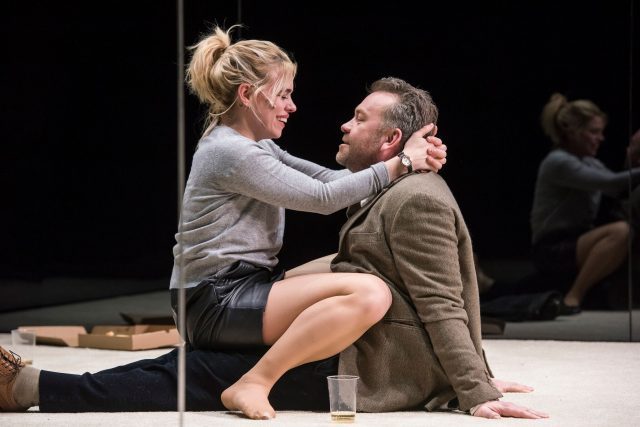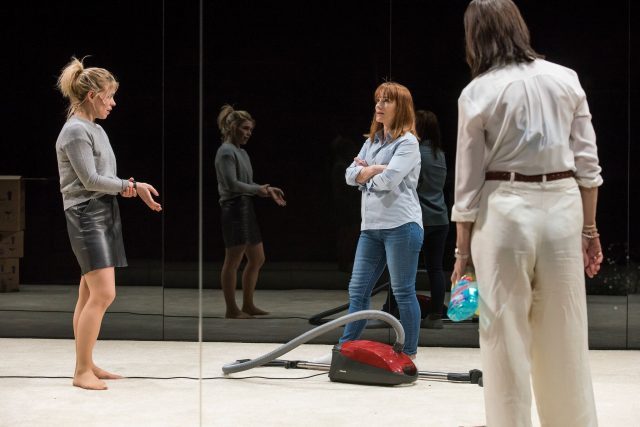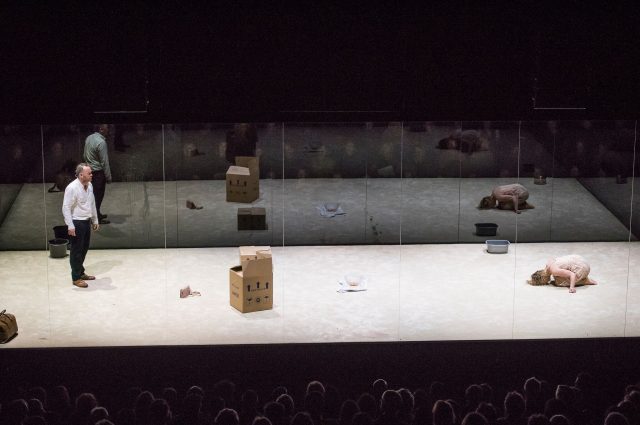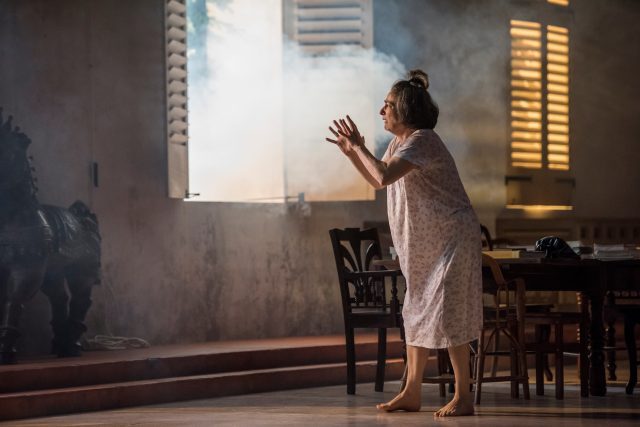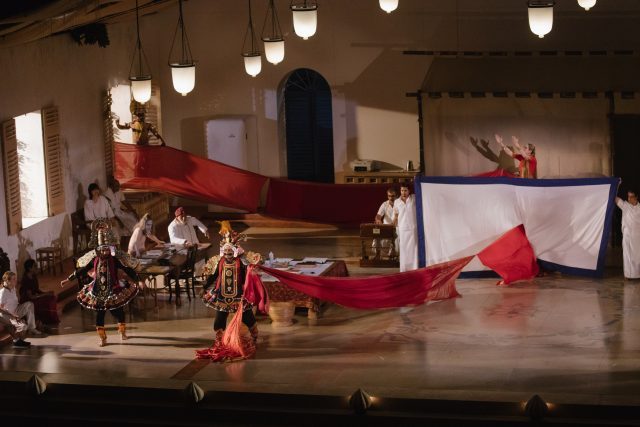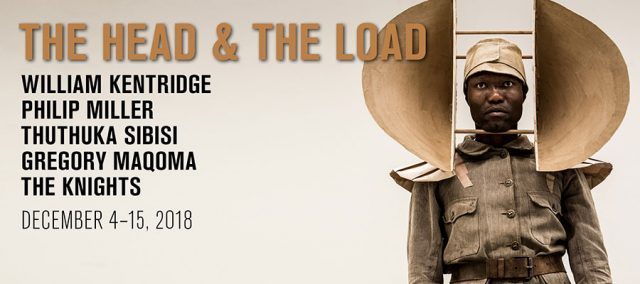
Park Avenue Armory, Wade Thompson Drill Hall
643 Park Ave. at 67th St.
December 4-15, $40-$90, 2:00/7:00/8:00
212-933-5812
armoryonpark.org
www.theheadandtheload.com
South African multidisciplinary artist and certified genius William Kentridge creates charcoal drawings, live-action and animated films, operas, multimedia installations, museum and gallery exhibitions, sculptures, collages, chamber pieces, university lectures, circus-like processions, and one-man shows, including a recent performance of Kurt Schwitters’s Ursonate Dada speech at Harlem Parish. For his latest unique, complex presentation, he is bringing the eighty-five-minute The Head & the Load to the Park Avenue Armory, where it will run December 4-15. The work was commissioned by 14-18 NOW and Park Avenue Armory along with Ruhrtriennale and MASS MoCA as part of the centenary of the end of WWI. “The Head & the Load is about Africa and Africans in the First World War. That is to say about all the contradictions and paradoxes of colonialism that were heated and compressed by the circumstances of the war,” Kentridge explains on the event website. “It is about historical incomprehension (and inaudibility and invisibility). The colonial logic towards the black participants could be summed up: ‘Lest their actions merit recognition, their deeds must not be recorded.’ The Head & the Load aims to recognise and record.” The title comes from the Ghanaian proverb “The head and the load are the troubles of the neck,” and the work pays tribute to African porters and carriers who served the French, German, and British armies during the war.
The technical aspects of productions are always pristine. Kentridge is credited with concept and design and is the director; his longtime collaborator, Philip Miller, composed the score and handled the music concept and orchestration, while Thuthuka Sibisi is cocomposer and music director. The projection design is by Catherine Meyburgh, with Janus Fouché, Žana Marović, and Meyburgh doing video editing and compositing. The choreographer is Gregory Maqoma, with cinematography by Duško Marović, costumes by Greta Goiris, sets by Sabine Theunissen, lighting by Urs Schönebaum, and sound by Mark Grey. The North American premiere at the armory will be performed by actors Mncedisi Shabangu, Hamilton Dlamini, Nhlanhla Mahlangu, and associate director Luc De Wit; featured vocalists and musicians Joanna Dudley, Nhlanhla Mahlangu, Ann Masina, Bham Ntabeni, Sipho Seroto, N`Faly Kouyate on kora, Mario Gotoh on viola, Tlale Makhene on percussion, and Vincenzo Pasquariello on piano (among other members of the Knights chamber orchestra); dancers Maqoma, Julia Zenzie Burnham, Thulani Chauke, Xolani Dlamini, Nhlanhla Mahlangu; and ensemble vocalists Mhlaba Buthelezi, Ayanda Eleki, Grace Magubane, Ncokwane Lydia Manyama, Tshegofatso Moeng, Mapule Moloi, Lindokuhle Thabede, and Motho Oa Batho. Kentridge, Miller, and Sibisi will participate in an artist talk on December 6 at 6:30 with Dr. Gus Casely-Hayford, placing The Head & the Load in political context.
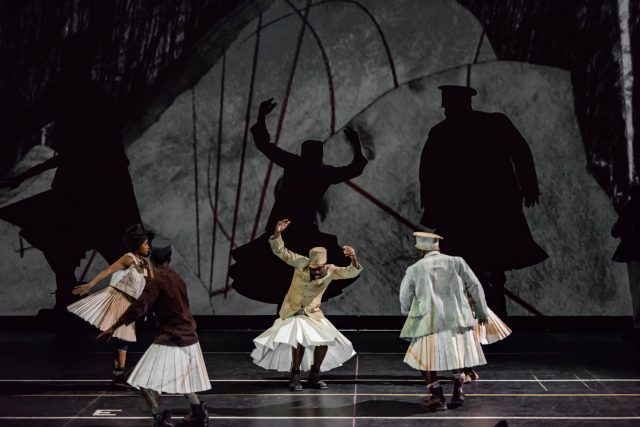
William Kentridge’s The Head & the Load runs at Park Ave. Armory December 4-15 (photo by Stella Olivier)
“The test is really to find an approach that is not an analytic dissection of a historical moment, but which doesn’t avoid the questions of history. Can one find the truth in the fragmented and incomplete? Can one think about history as collage, rather than as narrative?” Kentridge asks. “Carrying through the idea of history as collage, the libretto of The Head & the Load is largely constructed from texts and phrases from a range of writers and sources, cut-up, interleaved, and expanded. Frantz Fanon translated into siSwati; Tristan Tzara in isiZulu; Wilfred Owen in French and dog-barking; the conference of Berlin, which divided up Africa, rendered as sections from Kurt Schwitters’s Ursonate; phrases from a handbook of military drills; Setswana proverbs from Sol Plaatje’s 1920 collection; some lines from Aimé Césaire.” Meanwhile, Miller and Sibisi explain, “During the First World War, the English Committee for the Welfare of Africans sent hymn books, harmonicas, gramophones, and banjos to the African battalions so that they could entertain themselves. What songs of war, love, and longing might have been made by these African men in the trenches on the Western Front or in the camps of East Africa? . . . What did the Great War sound like to the African soldiers and carriers who fought in it? Their experiences were not considered significant enough to be recorded or archived. We can only imagine the noises they heard or the music they made, through the multitude of voices and sounds we have created in The Head & the Load.” As always with Kentridge, expect the unexpected, and the extraordinary.
